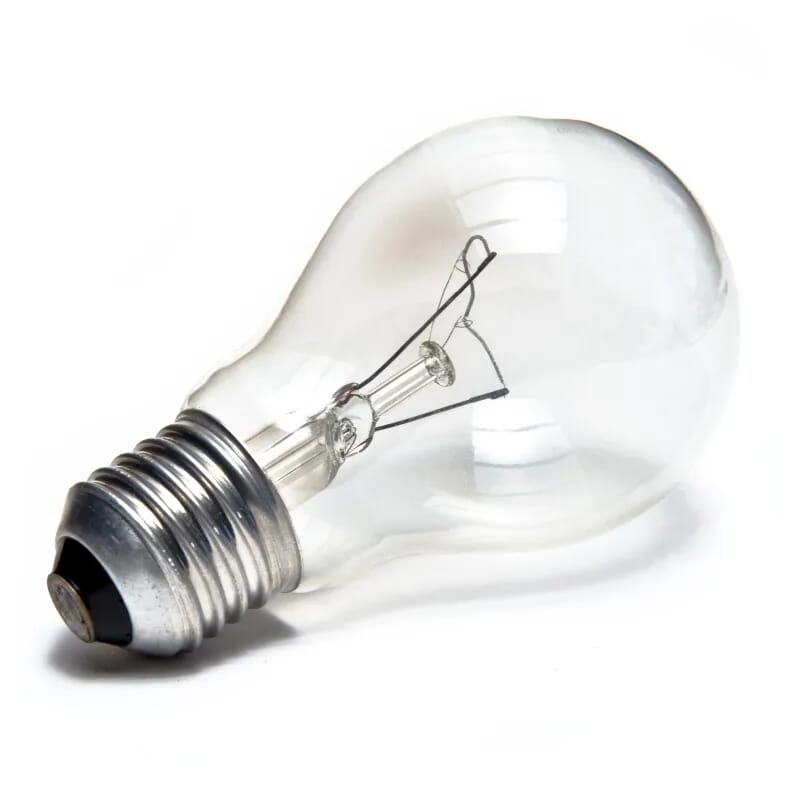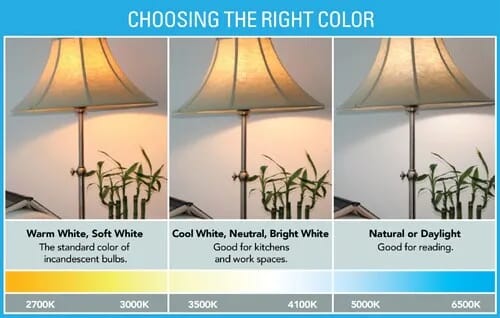How to Choose Incandescent Light Bulbs

Because incandescent light bulbs emit what many people consider to be the most desirable quality of light, they remain among the most popular lighting options today. Walk into any home improvement store for a light bulb and you'll be met with hundreds of options. Here's what you need to know to choose the right incandescent light bulb.
Conventional vs. Halogen
These are the two main types of incandescent light bulbs: conventional and halogen. The difference between these two types lies in the gas that fills them. Halogen light bulbs contain a special gas that helps keep the bulb clean, slightly improving its efficiency. Conventional bulbs protect their filaments, which burn hot to create the illumination, with an inert gas that keeps the filament from overheating.
Base Types
Besides the typical "A Lamp" (a screw-in, medium bulb base; the A stands for arbitrary) that comes to mind whenever you think of a light bulb, incandescent light bulbs come in a variety of different base types. When you purchase a light fixture, the packaging should indicate the type of bulb the fixture accepts. You can also find this information in item specifications here on Lights Online. Many decorative fixtures, like chandeliers, accept smaller candelabra-base bulbs that look kind of like candle flames.
Wattage
Before you purchase, know the maximum wattage that you can use with the fixture. The item specifications should tell you how many incandescent light bulbs the fixture can use and the maximum wattage for each bulb. While it may be tempting to add more light by increasing the wattage, it can actually be a safety hazard. In fact, wattage does not refer to how much light a bulb will produce--that's the lumens rating.
Special Types
If your light fixture has an open candelabra design where you can see the light bulb, you may want to consider a specialty incandescent light bulb for enhanced aesthetics. Edison-style bulbs with very intricate and decorative filaments are very popular for fixtures with visible bulbs. Silk wrap bulbs, where the bulb is wrapped in very thin threads that obscure the filament, add an elegant touch to a chandelier or wall sconce while flicker bulbs recall the look of an open flame. There are also pink-tinted bulbs that soften the light.
Once you are ready to actually buy incandescent bulbs, the boxes are going to look different and give you different information. Incandescent light bulbs as you know them are not gone forever. They're just more energy-efficient now and feature new measurements of their performance. Most importantly, you can save some money by purchasing these bulbs, too!
Let's say you have 15 old incandescent bulbs. The U.S. Department of Energy estimates that you can save $50 on electricity a year just by upgrading all of them to new incandescent bulbs! (We should mention now, though, that you could potentially save even more by choosing LED bulbs.)
Here's an important way that incandescent bulb buying has changed. The boxes now feature black and white Lighting Facts Labels that look like the nutrition facts on food. These boxes measure lumens, not watts, a change that can be confusing for consumers. The change in measurements is so incandescent lights can be more fairly compared to compact fluorescent lights, LED lights and other competitors.
Lumens are a measure of how much light a bulb gives you. The rule of thumb is the more lumens you have, the brighter the light. These are some watt to lumen equivalency rates using traditional wattages (more on that below):
| Watts | Lumens |
|---|---|
| 100 watts | 1600 lumens (range of 1490 to 2600 lumens) |
| 75 watts | 1100 lumens (range of 1050 to 1489 lumens) |
| 60 watts | 800 lumens (range of 750 to 1049 lumens) |
| 40 watts | 450 lumens (range of 310 to 749 lumens) |
Bulbs also feature new wattages due to their improved efficiency. Here is an equivalency rate table for that:
| Was | Now |
|---|---|
| 100W | 72W |
| 75W | 53W |
| 60W | 43W |
| 40W | 29W |
Also take a look at the color temperature, which appears as a sliding scale on the lighting facts label. It's measured in degrees Kelvin and is a helpful way to figure out what kind of light this bulb will emit. A lower Kelvin temperature (2700 to 3000K) means warmer light while a higher one (5000 to 6500K) is cooler. See a visual example of the difference:

A lower color temperature is good for those who like the traditional soft, yellowish glow of incandescent bulbs.
Incandescent light bulbs are extremely simple to install, dim and replace, plus they will add a romantic sparkle to your home. The recent resurgence of exposed bulb lighting is a nod to designers' enduring love of the incandescent's iconic and unique design.
For the best results with incandescents, be sure to apply the Lighting Layer approach in your overall design.
Watch the savings add up when you learn how to save money on your energy bill, too!
For more advice, call our trained lighting specialists at 1-866-688-3562.
Emma Harger-Young - Lights Online
